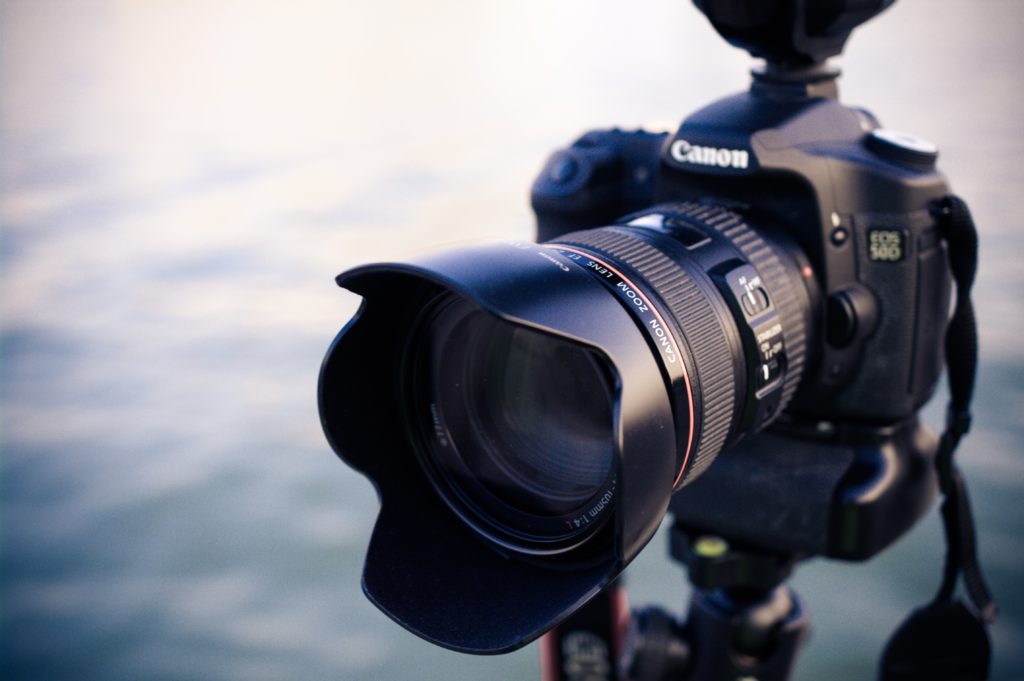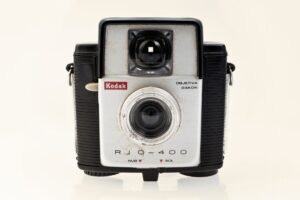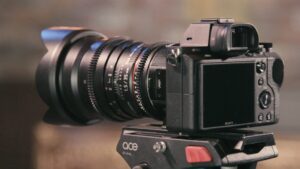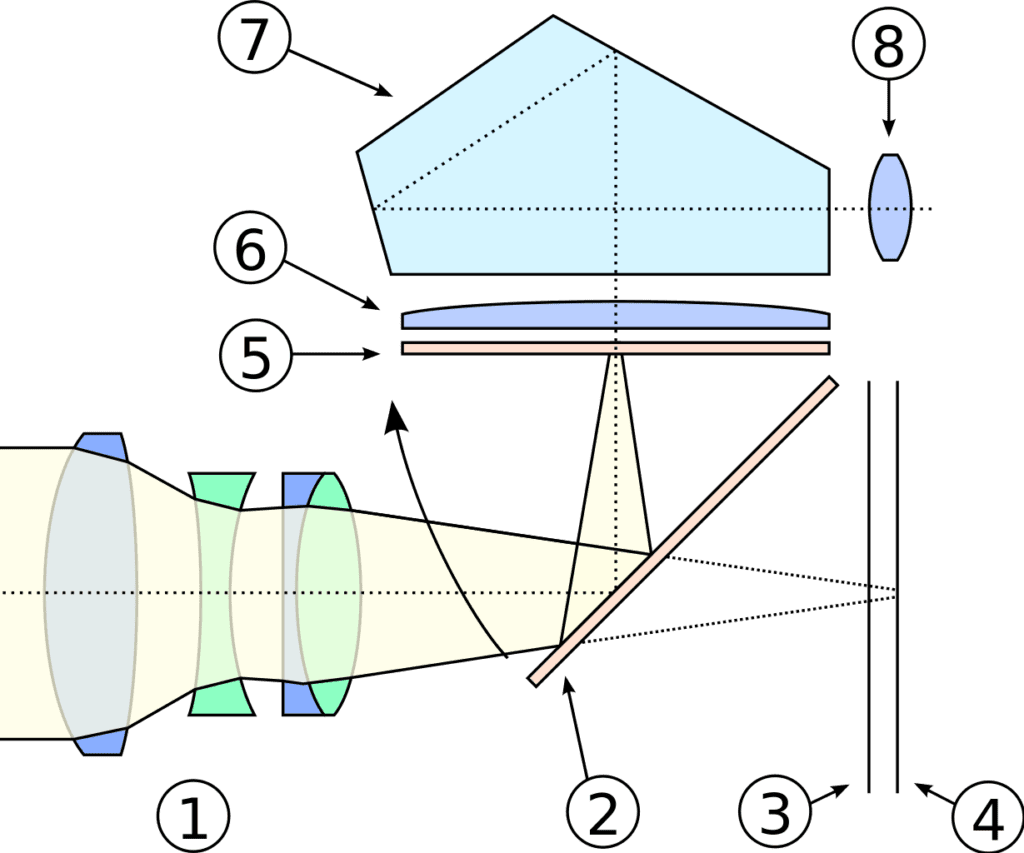- Questions?
- Contact
What is a digital SLR Camera

A digital single-lens reflex camera or SLR is a common tool in the designer’s tool bag. Unlike a point and shoot camera or a smart phone, the dSLR provides some additional creative controls allowing the photographer the ability to control how the final image will appear. In the photo above, the photographer was able to use depth of field to selectively focus on the lens. This technique helps direct the viewers’ attention to what is most important to the photographer.
What is a Single-Lens Reflex
 What makes an SLR camera unique is the ability to look through the lens and preview how the image will appear when it is shot. Using a series of mirrors behind the lens and in the pentaprism (viewfinder), the viewer is able to look directly through the lens and preview how the image will appear. Before the advent of digital cameras, this was a unique feature as most of the point and shoot cameras had a small viewfinder that above or next to the lens (see the Kodak Brownie image). Looking through this viewfinder would provide an approximation of the image, but you were not able to see how it appeared through the lens. Thankfully, with the advent of digital cameras, the photographer is able to see through the lens before the image is taken with any camera.
What makes an SLR camera unique is the ability to look through the lens and preview how the image will appear when it is shot. Using a series of mirrors behind the lens and in the pentaprism (viewfinder), the viewer is able to look directly through the lens and preview how the image will appear. Before the advent of digital cameras, this was a unique feature as most of the point and shoot cameras had a small viewfinder that above or next to the lens (see the Kodak Brownie image). Looking through this viewfinder would provide an approximation of the image, but you were not able to see how it appeared through the lens. Thankfully, with the advent of digital cameras, the photographer is able to see through the lens before the image is taken with any camera.
Cross-Section of a dSLR
- Lens Assembly
- Mirror (in down position)
- Focal Plane Shutter
- Sensor
- Focusing Screen
- Condensing Lens
- Pentaprism
- Eyepiece
Advantages of a dSLR
So, if all cameras can see through the lens, why would you want to invest in a dSLR camera? The simple answer is creative controls. When you purchase a dSLR you are purchasing a system that allows you flexibility to choose different lenses to help accommodate the type of shooting you will be doing. For those who are shooting buildings, there are specific lenses that allow the photographer to correct perspective in camera. For portrait photographers, there are lenses that allow for low-light shooting and provide the beautiful depth of field effects that help focus in on the subject. For sports photographers there are lenses that allow the photographer to get up close with the action and cameras that provide high frame rates. As you can see from these examples, the dSLR provides a lot of flexibility. But, it also provides a path to future cameras. If you purchase good lenses, they will outlast your current camera, so you only need to upgrade the camera body.
Disadvantages of a dSLR
Yes, there are some disadvantages. First off, they are bigger and heavier than your point and shoot cameras. One of my favorite sayings is “the best camera is the one that is with you.” For some photographers, it’s a chore to carry around the weight, so they will miss out on some shots when they wish they had it. Also, there are issues with dust that arise when you are changing lenses on the camera. This is easily fixed through a cleaning process, but it does require you to occasionally maintain the camera. Finally, they are costly and addicting.
Mirrorless vs. dSLR
 If you’re in the market to purchase your first camera, this is a decision you will be faced with–whether to buy a mirrorless camera or not. Mirrorless cameras are very similar to dSLR cameras, but they remove the mirror and instead use the sensor to live view what is going through the lenses. By removing the mirrors, the camera can be smaller and lighter. The creative controls are the same on both cameras, so really this decision comes down to what feels better in your hands and whether you prefer an analog viewfinder, or a digital viewfinder. If you prefer to use the screen on the back of the camera, rather than the viewfinder, you may find the mirrorless is better suited for you.
If you’re in the market to purchase your first camera, this is a decision you will be faced with–whether to buy a mirrorless camera or not. Mirrorless cameras are very similar to dSLR cameras, but they remove the mirror and instead use the sensor to live view what is going through the lenses. By removing the mirrors, the camera can be smaller and lighter. The creative controls are the same on both cameras, so really this decision comes down to what feels better in your hands and whether you prefer an analog viewfinder, or a digital viewfinder. If you prefer to use the screen on the back of the camera, rather than the viewfinder, you may find the mirrorless is better suited for you.
SLR Cross Section image from: “SLR Cross Section” by Wikimedia Commons is licensed under CC BY SA 3.0


